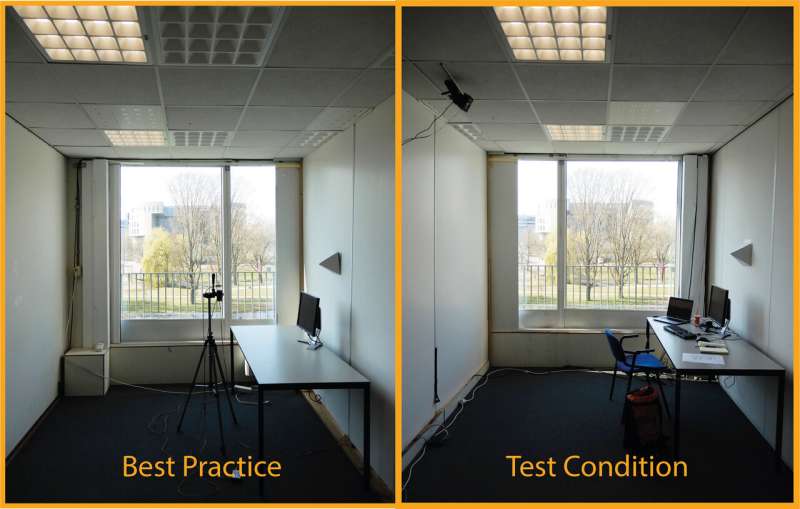Novel sensor improves lighting control

Humans spend approximately 90% of their time indoors, for example at the office. Consequently, it is essential to equip the office environment with a high quality lighting control system. Unfortunately, current systems are not up to this task yet. Too often, they tend to annoy the user, occasionally even leading to sabotaged systems—for instance, by unplugging sensor devices. The main issue is caused by the input, generally supplied by photo-sensors, which have limited relevancy and/or a low accuracy. Ph.D.-candidate Thijs Kruisselbrink suggests in his thesis to utilize the luminance distribution as input for these lighting control systems. Instead of the usually used illuminance. He developed a completely new sensor for this purpose. Kruisselbrink will defend his thesis on October 8th.
Luminance is the brightness experienced by the observer, and also includes, for example, the reflection of light on objects. Kruisselbrink's aim was to validate whether the luminance distribution is suitable to quantify lighting quality to, subsequently, serve as input for lighting control systems. Typically, the luminance distribution is measured using luminance cameras. This is a type of camera that is extremely expensive and is manually controlled. Consequently, these state-of-the-art cameras are not suitable for implementation in lighting control systems.
Therefore, Kruisselbrink developed a luminance camera, titled the Bee-Eye, that is practical and autonomous in use and consists of low-cost components. Naturally, the accuracy could not meet the state-of-the-art luminance cameras available on the market, and only a practical accuracy was achieved. However, Kruisselbrink clearly showed the value of this new sensor in his thesis. The sensor can measure the luminance distribution continuously without any interaction, which is relevant for lighting control applications, as well as for research applications.
Practical Issues
Even with the Bee-Eye, independent of the practical accuracy, it is a rather complex task to continuously monitor the lit environment of a real (office) environment as it introduces a number of practical issues. In an optimal test environment, for example, the sensor would be in the position of the office chair, but that is of course not possible in an office that is in use. Thus, the installation of the Bee-Eye in the room will always be sub-optimal. In his thesis, Kruisselbrink proposed useful recommendations to deal with the practical issues, based on measurements in the lab as well as in the field.
In his research Kruisselbrink monitored seven different lighting quality aspects. He performed his research in two offices during one week; one office was in use, and the other one was set up as an identical but optimal measurement setup in this environment.
This set-up introduced two types of errors: methodological errors and random errors. The methodological error was mainly caused by the deviant measurement setup (sensor attached to the ceiling), which was designed to be applicable for field studies, relative to the best practice measurement setup (sensor above the desk).
Noise Due To Movement
Random errors were introduced due to the presence of the user. The user produced quite some noise in the data due to its behavior. With his movements, he blocked the sensor numerous times. Consequently, not all relevant lighting quality aspects were accurately measured.
Some of the practical aspects that occurred require additional intelligence from the Bee-Eye, such as surface recognition. Other aspects turned out to be acceptable compared to the optimal environment. In summary, Kruisselbrink has taken the first steps towards a suitable light control system, but the journey is not completed yet.
More information: Title of PhD-thesis: Practical and continuous luminance distribution measurements for lighting quality. Supervisors: Alexander Rosemann, Eindhoven University of Technology, Evert van Loenen, Eindhoven University of Technology, Rajendra Dangol, Eindhoven University of Technology.
















